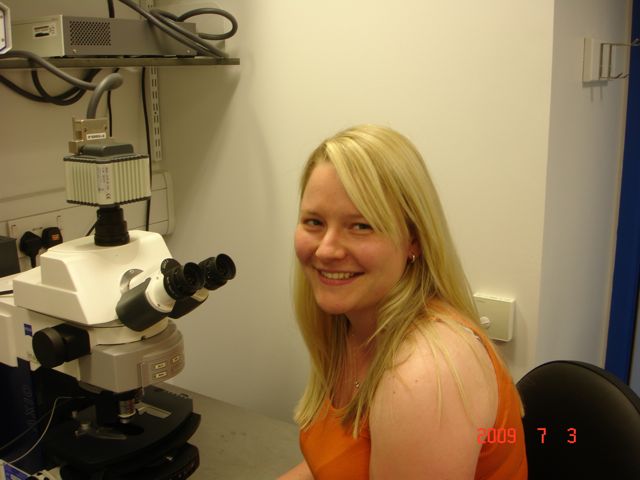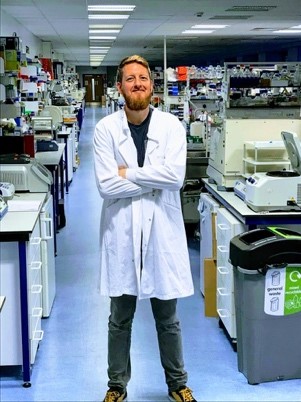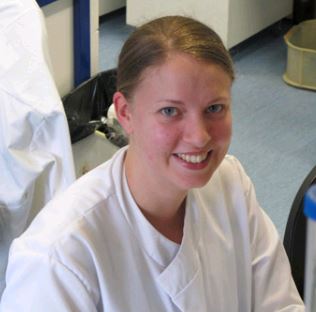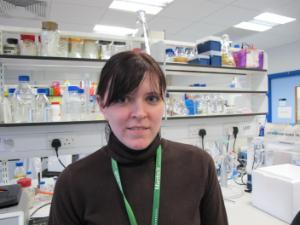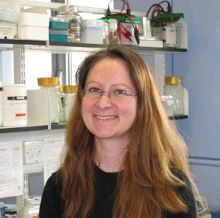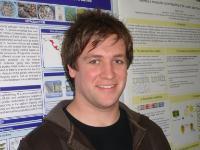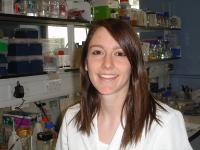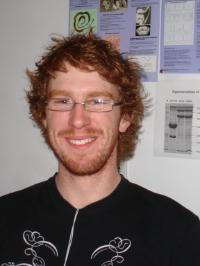former lab members, never forgotten
Kabo Wale
Roe Group Member: 2019 - 2023
PhD Student
Kabo joined the Roe Research Group to undertake his PhD in 2019 from Botswana where he was a lecturer in Microbiology. In Botswana, he gained over 8 years’ experience in Microbiology. His research included identification of new virulence genes in pathogenic bacteria and determining how these genes are regulated during host infection. In addition, he has experience in industrial application of micro-organisms in different products, e.g., probiotics, bio detergent, wastewater treatment products and bio degreasers.
His PhD is co-funded between Glasgow University and Botswana University. His research focused on the central carbon metabolism regulator pdhR and its effect on virulence in Enterohemorrhagic E. coli (EHEC). Understanding of these effects could lead to discovery of new drug targets in pathogenic bacteria for better antimicrobial therapy. His interdisciplinary project encompasses a wide variety of techniques including animal models of EHEC, transcriptomics, metataxonomic, microscopy and molecular biology.
Key Publication:
Wale, K.R., Cottam, C., Connolly, J.P.R. and Roe, A.J. (2021) 'Transcriptional and metabolic regulation of EHEC and Citrobacter rodentium pathogenesis', Current Opinion in Microbiology, 63, 70-75, available: http://dx.doi.org/10.1016/j.mib.2021.06.002.
Dr Nicky O'Boyle
Roe Group Member: 2017 - 2022
Post Doctoral Researcher
Nicky obtained his PhD in Microbiology at the National University of Ireland, Galway in 2013 for studies on the food-borne pathogen Vibrio parahaemolyticus. He joined the Roe group in 2017, first analysing the effect of a host metabolite D-serine on global gene expression in various pathotypes of E. coli associated with intestinal and extraintestinal diseases. This metabolite is interesting because it reduces expression of the primary colonisation machinery of enterohaemorrhagic E. coli – the “LEE” type 3 secretion system.
Nicky now runs his own research group the at the School of Microbiology at University College Cork.
Key publication:
O’Boyle, N., Connolly, J.P., Tucker, N.P. and Roe, A.J. (2020) 'Genomic plasticity of pathogenic Escherichia coli mediates D-serine tolerance via multiple adaptive mechanisms', Proceedings of the National Academy of Sciences, 117(36), 22484-22493, available: http://dx.doi.org/10.1073/pnas.2004977117.
Dr James Mordue
Roe Group Member: 2018 - 2022
PhD student
James’ project was in collaboration with Professor Nikolaj Gadegaard and his lab who provide expertise in nanofabrication and microfluidic technology. The precise altering of surface nanotopography allowed the study of bacterial responses to physical changes in their environment. James completed his PhD in 2022.
Key publication:
Mordue, J., O'Boyle, N., Gadegaard, N. and Roe, A.J. (2021) 'The force awakens: The dark side of mechanosensing in bacterial pathogens', Cellular Signalling, 78, 109867, available: http://dx.doi.org/10.1016/j.cellsig.2020.109867.
Dr Jennifer Hallam
Roe Group Member: 2018 - 2022
PhD student
Jeni worked on the bacterial toxin, colibactin. Her PhD looked at the effect of amino acids on this toxin. Her studies included overseas visits to Vietnam and working with industrial collaborators. Jeni completed her PhD in 2022.
Key publication:
Hallam, J.C., Sandalli, S., Floria, I., Turner, N.C.A., Tang-Fichaux, M., Oswald, E., O'Boyle, N. and Roe, A.J. (2023) 'D-Serine reduces the expression of the cytopathic genotoxin colibactin', Microb Cell, 10(3), 63-77, available: http://dx.doi.org/10.15698/mic2023.03.793.
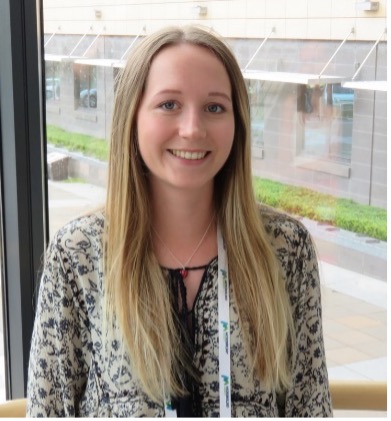
Dr Natasha Turner
Roe Group Member: 2017 - 2021
PhD Student
Natasha’s PhD looked at the role of the intrinsic LysR type regulator, DsdC. Using ChIP-seq, RNA-seq and phenotypic studies, she showed the wider role of this protein in E. coli gene expression. Tash completed her PhD in 2021.
Key publication:
Connolly, J.P., Turner, N.C., Serrano, E., Rimbi, P.T., Browning, D.F., O’Boyle, N. and Roe, A.J. (2022) 'Control of resistance against bacteriophage killing by a metabolic regulator in meningitis-associated Escherichia coli', Proceedings of the National Academy of Sciences, 119(45), e2210299119, available: http://dx.doi.org/10.1073/pnas.2210299119.
Liyana Azmi (2014)
Liyana first joined the lab as part of her Masters degree and then secured funding from the Ministry of Higher Education Malaysia to pursue a PhD jointly with Professor Olwyn Byron, working on the structural characterisation of AdhE.
This bifunctional enzyme is unique in its structure: forming filament-like oligomers known as spirosomes. Biophysical techniques such as analytical ultracentrifugation, SAXS and cryo-electron microscopy were all employed to investigate the structure of the protein.
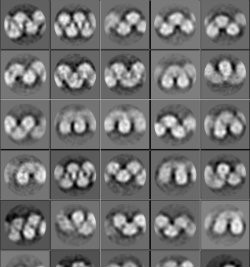
2D class averages from cryo-EM that show different lengths and curvatures of spirosomes.
Key output: Aldehyde-alcohol dehydrogenase forms a high-order spirosome architecture critical for its activity. Kim G, Azmi L, Jang S, Jung T, Hebert H, Roe AJ, Byron O, Song JJ. Nat Commun. 2019 Oct 4;10(1):4527

Alejandro Huerte-Uribe (2013)
Alejandro joined us from Mexico on Wellcome Trust 4-year PhD programme at the University of Glasgow. After three different laboratory placements during the first year, I decided to start my PhD project under the supervision of Dr. Andrew Roe exploring anti-virulence based strategies to prevent Shiga toxin expression in Shiga-toxin producing E. coli (STEC). This multidisciplinary project involves the use of a wide range of techniques in the fields of synthetic organic chemistry, molecular microbiology and drug discovery.
Key output: Huerta-Uribe, A. et al. (2016) Identification and characterization of novel compounds blocking Shiga toxin expression in Escherichia coli O157:H7. Frontiers in Microbiology, 7, 1930.

Jayde Gawthorne (2013)
Jayde joined us from sunny Australia to work as a BBSRC funded postdoc in collaboration with Dr Jost Eninga (Institute Pasteur). She developed and published work on the use of LOV domains to track effector protein secretion.
Key output: Gawthorne, J. A., Audry, L., McQuitty, C., Dean, P., Christie, J. M. , Enninga, J. and Roe, A. J. (2016) Visualizing translocation and localization of bacterial type III effector proteins using a genetically encoded reporter system. Applied and Environmental Microbiology, 82(9), pp. 2700-2708.
Riccardo Zambelloni (2012)
Riccardo joined us from Italy on a Kelvin-Smith Studentship project. His work was a fusion of Biology and Medicinal Chemistry and combines synthetic chemistry methodologies with biological techniques (i.e. inhibition assays and X-ray crystallography). He developed a new series of very specific inhibitors of the EHEC T3SS. He is now a senior scientist with Sygnature Discovery.
Key output: Zambelloni, R., Connolly, J. P.R., Huerta Uribe, A., Burgess, K., Marquez, R. and Roe, A. J. (2017) Novel compounds targeting the enterohemorrhagic Escherichia coli type three secretion system reveal insights into mechanisms of secretion inhibition. Molecular Microbiology, 105(4).
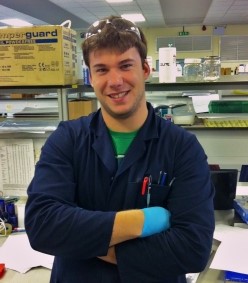
Zoe Marjenberg (2012)
Zoe joined us for an Industrial sponsored PhD funded by Novartis Vaccines. The project aims to develop and evaluate new prophylactic and therapeutic intervention strategies against pathogenic E. coli. Zoe developed several key models of infection that have been useful for subsequent projects.
Key co-authorship: Huerta-Uribe, A. et al. (2016) Identification and characterization of novel compounds blocking Shiga toxin expression in Escherichia coli O157:H7. Frontiers in Microbiology, 7, 1930.
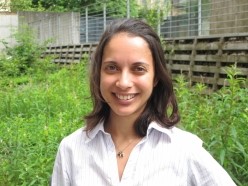
Hong-Jin Wu (2011)
Sky did her third rotation of an MRes degree with us. She worked on developing biochemical assays for WrbA as well as identifying new crystal conditions. Sky left our lab and went back to Taiwan for her new job as an RA at the Academic Sinica.
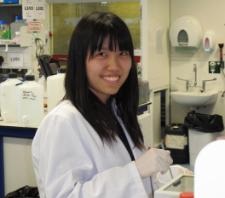
Annabel Hinderfeld (2011)
Annabel did her second rotation of her MRes degree with us. She was characterising YhaJ responses to the presence of amino acids.
Snezhana Akpunarlieva (2011)
Snezhana did her second rotation of her MRes degree, as part of the Doctoral training program in Proteomics and Engineering.
David Rodgers (2010)
David worked with us on his second rotation of the Wellcome Trust Molecular functions in disease PhD programme. Whilst working with us, David created a series of defined deletions in the YhaO pathway, allowing us to understand the individual roles these proteins play.
Sarah MacDonald (2010)
Sarah did her second MRes placement with us. She was working on salicylidene acylhydrazide drug targets: analysis of defined mutants using gene expression and biochemical analyses. Sarah moved to a position as a research assistant at the Royal Veterinary College, University of London.
Mads Gabrielsen (2010)
Mads worked with us on the biochemical and structural characterisation of the transport protein YhaO. Having completed this project, he moved to the Beatson where he continues his work on protein structure and characterisation.
Key output: Gabrielsen, M., Kroner, F., Black, I., Isaacs, N.W., Roe, A.J. and McLuskey, K. (2011) High-throughput identification of purification conditions leads to preliminary crystallization conditions for three inner membrane proteins. Molecular Membrane Biology, 28(7-8), pp. 445-453.
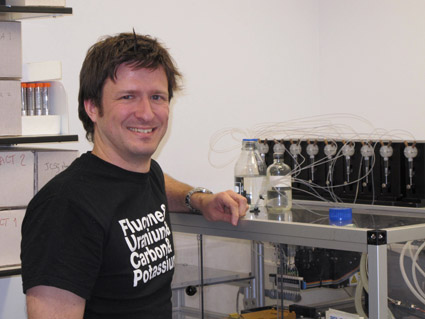
James Connolly (2010)
James did his first MRes placement in our lab. After a spell in industry, he returned for a PhD, characterising the Yha system where he discovered the importance of D-serine as a metabolite for affecting niche specificity. He worked as a post-doc on a BBSRC-funded grant studying the regulator YhaJ. He is now an independent fellow at the University of Newcastle.
Key output: Connolly, J. P.R., O'Boyle, N., Turner, N., Browning, D. F. and Roe, A. J. (2019) Distinct intra-species virulence mechanisms regulated by a conserved transcription factor. Proceedings of the National Academy of Sciences of the United States of America, (doi: 10.1073/pnas.1903461116)
Kate Beckham (2010)
Kate did her third rotation of the Wellcome Trust Molecular functions in disease PhD programme, followed by a very successful PhD characterising targets of secretion inhibitors. She progressed to an EMBO funded EIPOD fellowship at EMBL.
Key output: Beckham, K.S.H. et al. (2014) The metabolic enzyme AdhE controls the virulence of Escherichia coli O157:H7. Molecular Microbiology, 93(1), pp. 199-211.
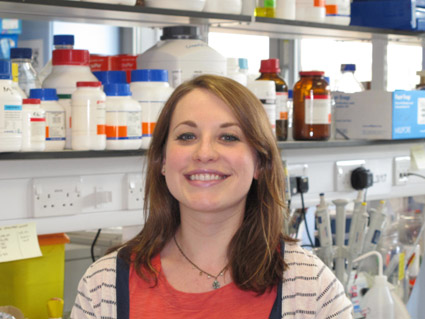
Larissa Laine (2009)
Larissa did her third rotation of the Wellcome Trust Molecular functions in disease PhD programme with us. She did initial characterisation of proteins in the YhaO pathway, in collaboration with Dr Olwyn Byron.
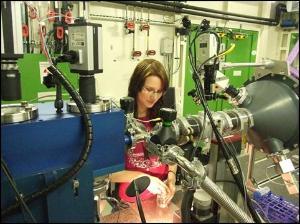
Dai Wang (2008)
Like Andrew, Dai also worked previously with Professor David Gally at the University of Edinburgh. Dai worked with us as a Medical Research Scotland funded PDRA on the mechanism of action of the salicylidene acylhydrazide compounds. He is now an Associate Professor at the University of Xiamen, China.
Key output: Wang, D. et al. (2011) Identification of bacterial target proteins for the salicylidene acylhydrazide class of virulence blocking compounds. Journal of Biological Chemistry, 286(34), pp. 29922-29931.
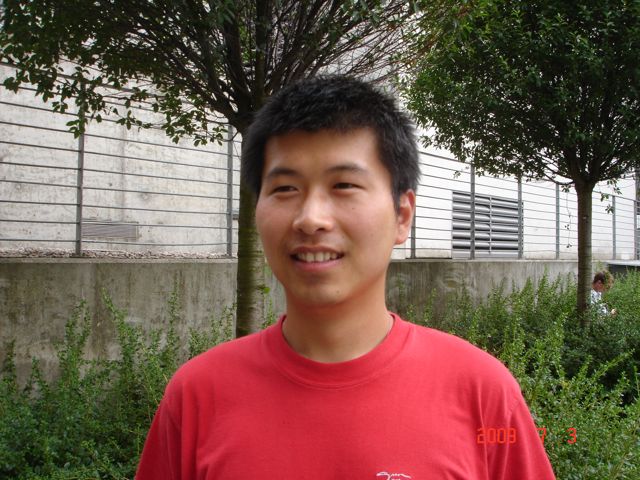
Ashleigh Holmes (2007)
The very first member of the group! Ash did her PhD on the expression, secretion and localization of two non-LEE encoded (Nle) effector proteins thereby expanding our knowledge of the pathogenesis of EHEC. She completed her studies and moved to the James Hutton Institute to continue her work into E. coli pathogenesis.
Key output: Holmes, A., Muhlen, S., Roe, A.J. and Dean, P. (2010) The EspF effector - a bacterial pathogen's Swiss army knife. Infection and Immunity, 78(11), pp. 4445-4453. (doi: 10.1128/IAI.00635-10)
